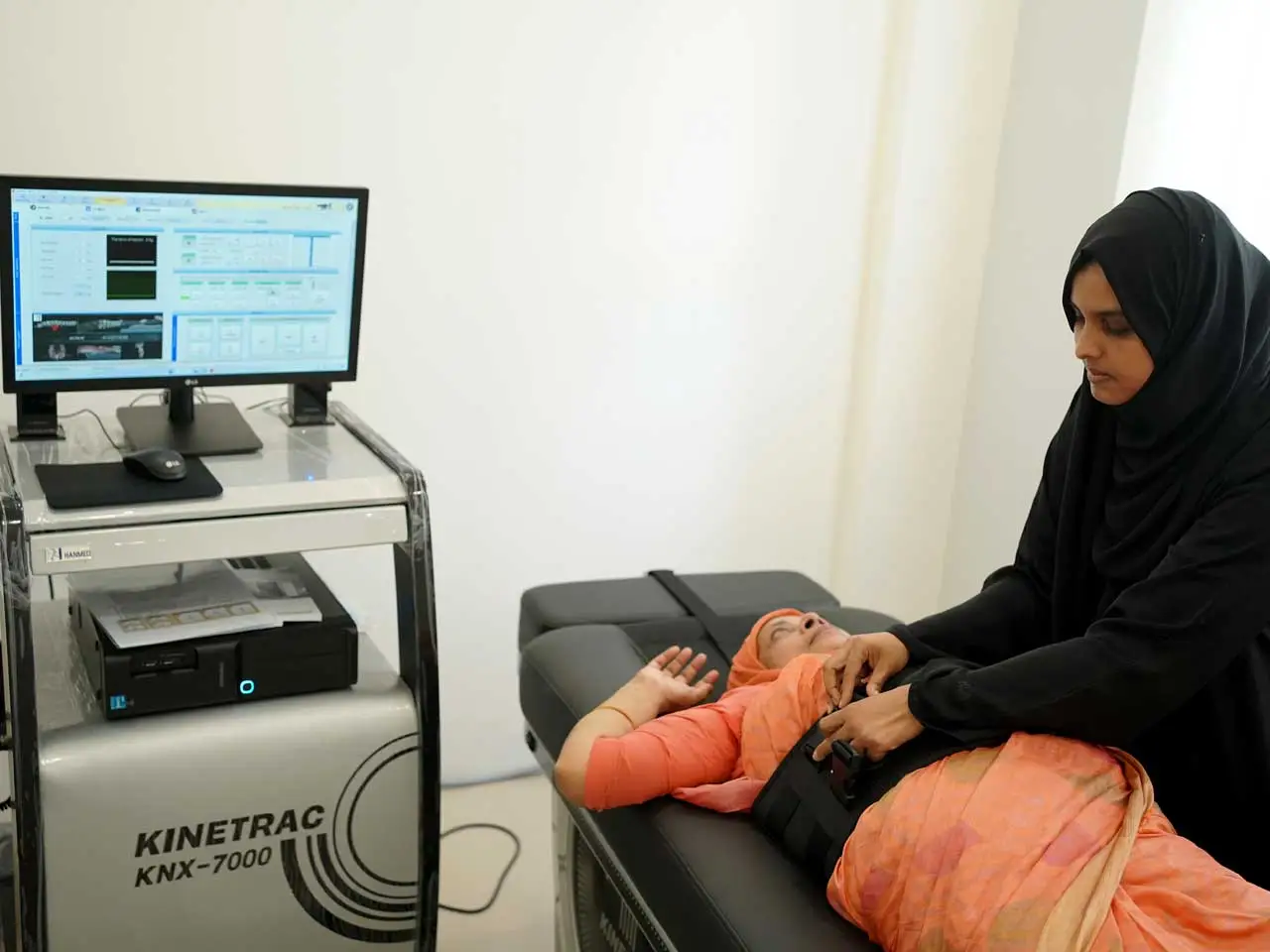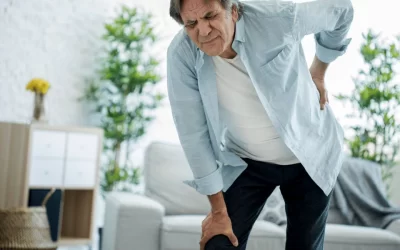Programs
Spinal Wellness Program
Maana Health’s Spinal Wellness program offers a holistic approach to spine treatment without surgery, combining spinal decompression therapy and other elements for non-invasive relief for conditions like disc bulge, herniation, back and neck pain, etc.
Surgeries Avoided
Maana Health’s Spinal Wellness program has successfully avoided over 1000 surgeries, offering a positive and hopeful alternative for those seeking non-invasive spine treatment.
Maana Health stands out in patient care with scientifically proven techniques, US FDA & European CE-approved treatments, and cutting-edge technologies. Our approach combines various treatments to address conditions comprehensively. By bridging the gap between advanced medical technologies and local accessibility, Maana Health is not just treating individuals; it’s empowering communities with the latest in healthcare.
Holistic Approach
Our spinal wellness program combines various elements to maximize the patient’s treatment effectiveness through a holistic approach.
Our treatment modalities and treatment approaches are US FDA and CE-approved activate the body’s self-healing mechanism and muscle-strengthening mechanism and do not have any side effects. We combine spinal decompression therapy, exercises, diet and nutrition management, lifestyle management, posture correction, and ergonomics guidance. This holistic approach addresses the issue from all perspectives, making our program unique in its comprehensive treatment of spinal ailments. The elements of the program are


3D Mobilization
& correction

Exercises

Posture Correction & Ergonomics Guidance

Diet & Nutrition
Counselling

3D
Decompression

Conditions We Heal
Our goal is to help you regain mobility, reduce pain, and improve your overall quality of life by treating the root cause of the condition without the need for surgery.

Back Pain & Neck Pain

Disc Bulge

Disc Herniation

Sciatica

Degenerative Disc Disease

Cervical Spondylosis

Facet Syndrome
What is Spinal Decompression Therapy?
World’s most advanced non-surgical treatment
for back and neck pain.
Non-surgical spinal decompression is an advanced treatment for patients who suffer from neck pain, neck pain, and pain radiating to the shoulders and legs. A decompression treatment slowly and gently lengthens or releases pressure in the spine through repetitive movements by a customized medical device. The table pulls and releases, creating a pressure change within the intervertebral disc, surrounding soft tissue, and joints. This pressure change allows the disc bulges or herniations and nutrients to be pulled back into the disc. Rehydration of the disc and surrounding tissues creates a physiological change that assists the body’s natural healing process

Patient Story
FAQ’s
What is spinal decompression therapy? Does it help me?
How long does a typical spinal wellness program last?
Are there any age restrictions for spinal decompression therapy?
Spinal decompression therapy is generally safe for adults of all ages, but a thorough evaluation by a healthcare professional is necessary to determine suitability.
What are the potential benefits of spinal wellness programs?
How much does spinal decompression treatment cost?
Accreditations and Certifications


Other Programs
Maana Health offers a range of specialized programs designed to address various health needs without a surgical intervention.
Research Evidences -1
Research article Restoration of disk height through non-surgical spinal decompression is associated with decreased discogenic low back pain: a retrospective cohort study
Authors: Christian C Apfel, Ozlem S Cakmakkaya, William Martin, Charlotte Richmond3, Alex Macario4, Elizabeth George, Maximilian Schaefer, and Joseph V Pergolizzi
This retrospective cohort study investigates the impact of non-surgical spinal decompression on discogenic low back pain. Researchers assessed patients who underwent this treatment and measured changes in disc height and pain levels. Results indicated that patients who experienced restoration of disc height reported significant reductions in low back pain. The findings suggest a correlation between improved disc height and decreased pain symptoms, highlighting the potential of non-surgical spinal decompression as an effective treatment option for patients suffering from discogenic low back pain. This study contributes valuable insights into non-invasive approaches for managing this common condition, underscoring the importance of disc height restoration in pain relief outcomes.
You may be interested in these questions
What methodology did the researchers use?
The researchers conducted a retrospective cohort study, assessing patients who underwent non-surgical spinal decompression and measuring changes in disc height and pain levels through follow-up evaluations.
What were the key findings regarding disc height and pain relief?
The key findings of the study on the impact of non-surgical spinal decompression on discogenic low back pain are:
- Restoration of Disc Height: Patients who underwent non-surgical spinal decompression typically experienced a significant restoration of disc height.
- Reduction in Pain Levels: There was a notable decrease in discogenic low back pain reported by patients following the treatment, indicating an improvement in their symptoms.
- Correlation Between Disc Height and Pain Relief: The results suggest a positive correlation between the restoration of disc height and the reduction of pain levels, supporting the efficacy of the treatment.
- Non-Invasive Treatment Effectiveness: The study highlights non-surgical spinal decompression as a potentially effective non-invasive option for managing discogenic low back pain.
- Implications for Patient Care: These findings provide valuable insights for practitioners considering treatment options for patients with disc-related pain, suggesting that restoring disc height may be beneficial for pain management.
The study found that patients who experienced restoration of disc height following treatment reported significant reductions in their low back pain levels.
What were the key findings of the study about the HIFEM device's impact on patients?
The key findings indicated that patients experienced statistically significant improvements in urinary incontinence symptoms after treatment with the HIFEM device, as well as enhanced quality of life, demonstrating its potential as a viable non-surgical treatment option
What does the study suggest about non-surgical spinal decompression?
The study suggests that non-surgical spinal decompression can be an effective treatment option for patients suffering from discogenic low back pain. It highlights the procedure’s potential to restore disc height, which is correlated with significant reductions in pain levels. This emphasizes the treatment as a viable non-invasive approach for managing this common condition, providing an alternative to surgical interventions and improving patient outcomes related to pain relief and quality of life.
What is the significance of this research?
The significance of this research lies in its demonstration that non-surgical spinal decompression can effectively restore disc height and reduce discogenic low back pain. This provides a viable, non-invasive treatment option for patients, offering an alternative to surgery. The findings support clinicians in considering spinal decompression as a therapeutic strategy, potentially improving patient outcomes and emphasizing the role of disc health in pain management.
Research Evidences -2
Functional Changes in Patients and Morphological Changes in the Lumbar Intervertebral Disc after Applying Lordotic Curve-Controlled Traction: A Double-Blind Randomized Controlled Study
Authors: Chang-Hyung Lee 1, Sung Jin Heo 2, So Hyun Park 3, Hee Seok Jeong 4 and Soo-Yeon Kim 1
This study investigates the effects of lordotic curve-controlled traction on lumbar intervertebral disc changes and patient functionality. Conducted as a double-blind randomized controlled trial, it involved patients with lumbar disc issues. The intervention aimed to restore the natural lordotic curve of the spine, assessing both functional outcomes and morphological changes in the intervertebral discs using imaging techniques. Results indicated significant improvements in patient-reported outcomes and observable changes in disc structure, suggesting that targeted traction can enhance treatment efficacy for lumbar disc pathology. This study supports the therapeutic benefits of non-invasive interventions in managing spinal disorders.
You may be interested in these questions
What was the main objective of the study?
The main objective was to evaluate the effects of lordotic curve-controlled traction on functional changes in patients and morphological changes in the lumbar intervertebral discs.
What type of study design was used in this research?
The study employed a double-blind randomized controlled design to minimize bias and ensure the reliability of the results.
Who were the participants in this study?
The participants in this study were patients with lumbar disc issues, specifically those diagnosed with conditions affecting the lumbar intervertebral discs. The study likely included individuals experiencing pain and dysfunction related to these conditions, although specifics such as the inclusion and exclusion criteria would provide more detailed insights into the participant demographics. If you need further details about characteristics like age range or specific diagnoses, feel free to call our team.
What were the key findings regarding patient functionality?
The key findings regarding patient functionality from the study indicated that patients undergoing lordotic curve-controlled traction experienced significant improvements in their reported outcomes related to functionality. Specifically, this intervention helped alleviate symptoms such as pain and disability, thereby enhancing the overall quality of life and daily functioning of the participants. These positive changes suggest that the traction technique effectively supports rehabilitation in individuals with lumbar disc issues. If you’d like more details on specific measures or statistics from the study, let us know!
What is the significance of this research?
The significance of this research lies in its demonstration that non-surgical spinal decompression can effectively restore disc height and reduce discogenic low back pain. This provides a viable, non-invasive treatment option for patients, offering an alternative to surgery. The findings support clinicians in considering spinal decompression as a therapeutic strategy, potentially improving patient outcomes and emphasizing the role of disc health in pain management.
Blog
Latest News & Resources
Discover Holistic Backache Pain Treatment at Maana Health: Advanced Non-Surgical Spine Treatment
Are you tired of dealing with persistent backache pain? Finding effective treatment that targets...
Neck Pain: Symptoms, common causes and when to seek treatment
The neck also called the cervical spine which connects the head with the torso and provides the...
Lower Back Pain: Symptoms, common causes and when to seek treatment
The lumbar spine is situated in the lower back region of the body between the thorax and sacrum....
Improve Your Posture at Work with These Tips
Sitting all day in an office chair can cause long-term damage to your posture, leading to aches...
Office
Monday – Saturday : 8:30 am to 6:00 pm




